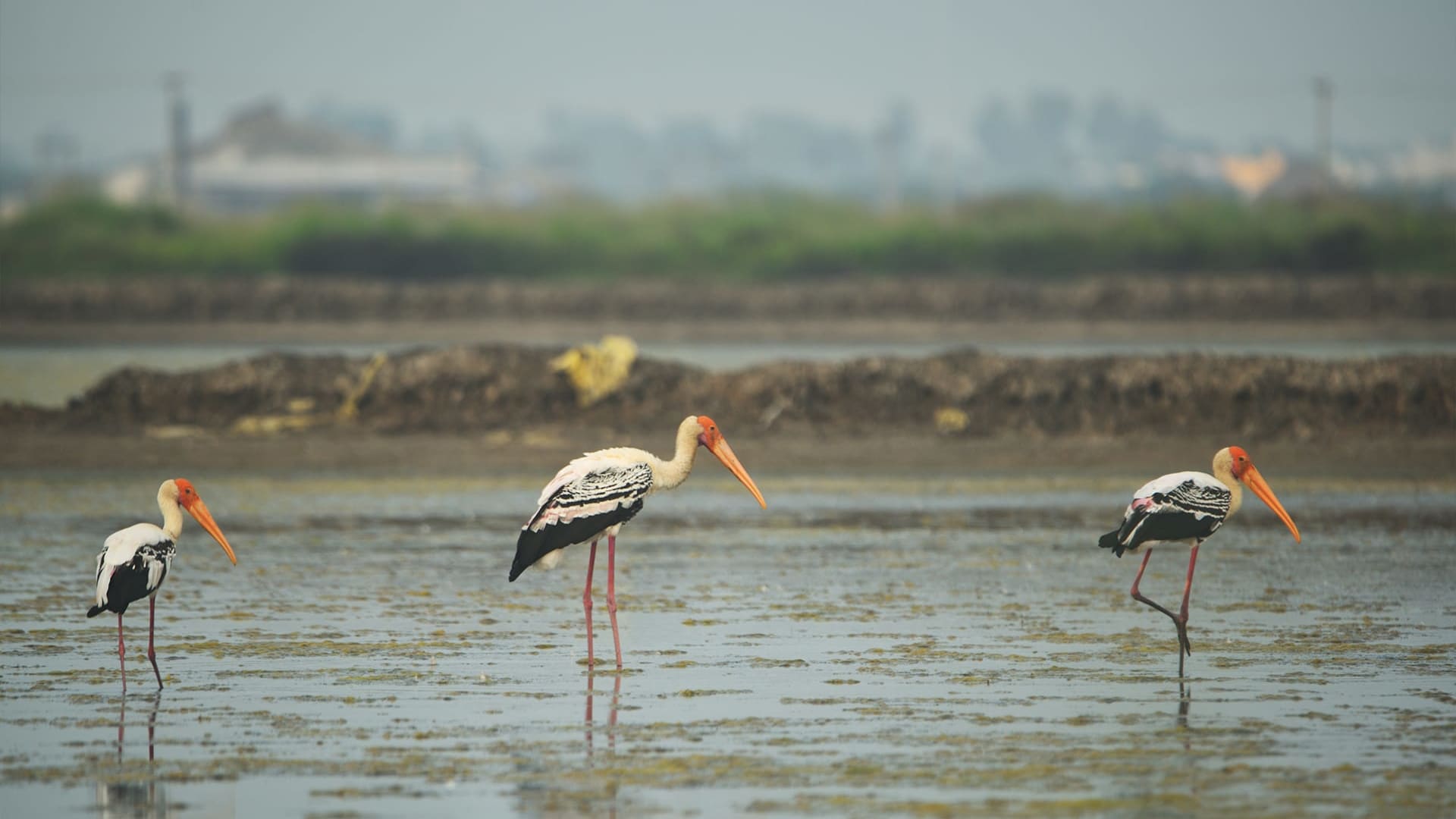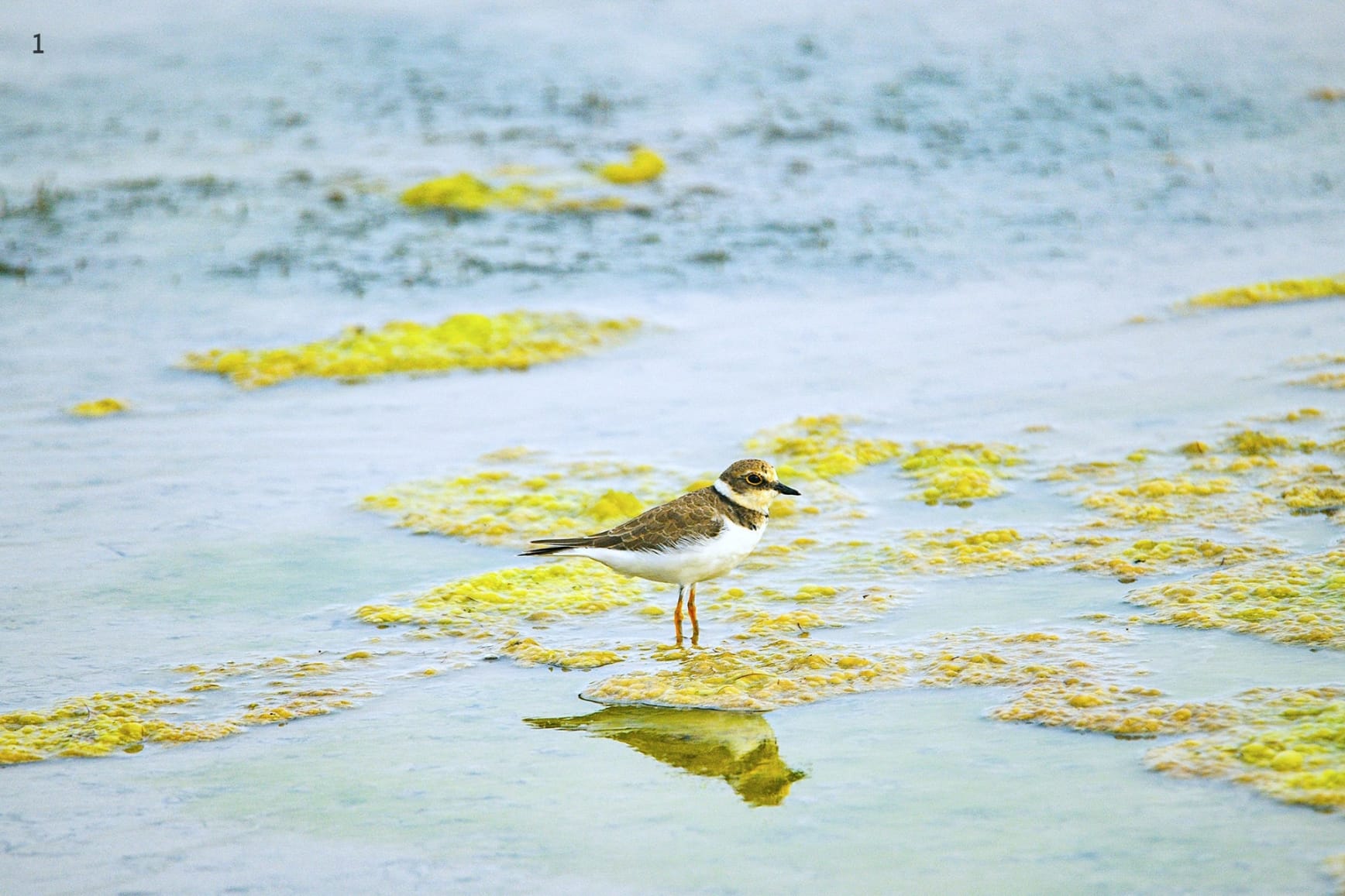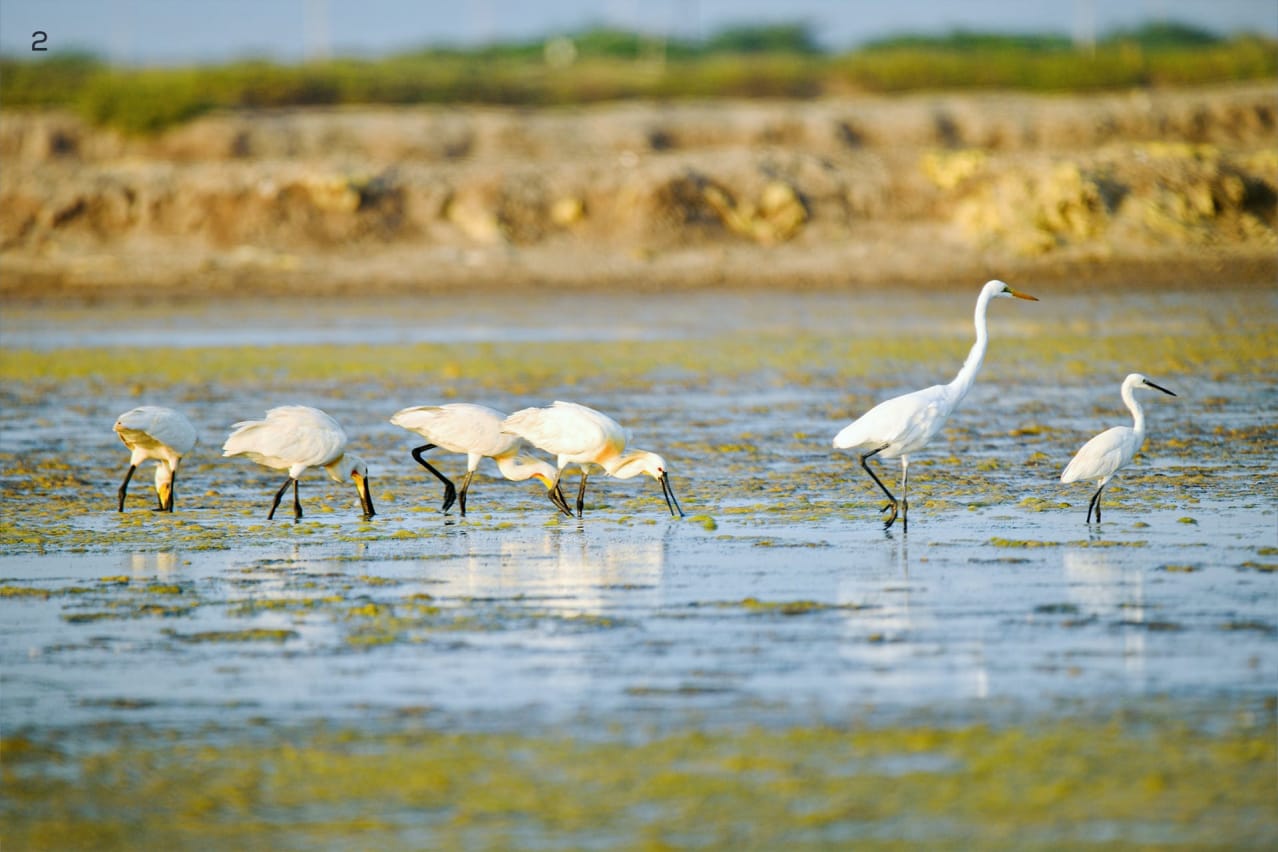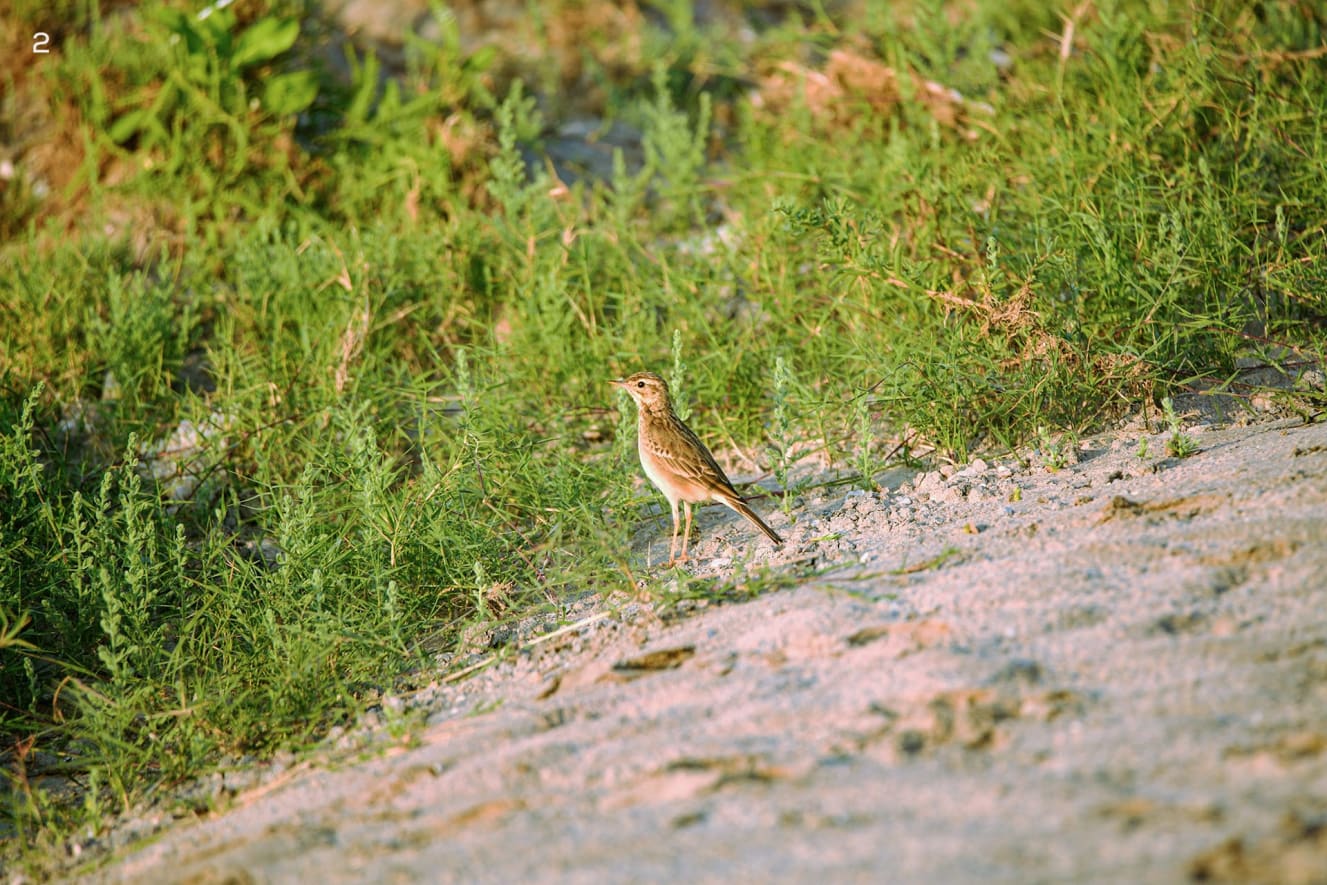 Listen to this article
•
15:34 min
Listen to this article
•
15:34 min
Salt is a fascinating medley of elements. Sodium, which explodes on contact with water, and highly toxic chlorine combine to create sodium chloride, a harmless white compound that makes our curries tasty and the ocean salty. How much salt is required to make the entire ocean salty? At roughly 35 grams of salt per kilo of water, an estimated 50 quintillion (50 followed by 18 zeros) kilograms of salt is dissolved in our oceans. Besides supporting innumerable lives, the ocean is also the primary source of dietary salt for billions of humans. The outskirts of Thoothukudi (Tuticorin) town, on Tamil Nadu’s Coromandel coast, have been transformed into a mosaic of rectangles that hold ocean water. From these rectangular “pans” of salty water, salt is extracted for human consumption and to support industry and the livelihoods of tens of thousands of people.
The practice of extracting salt from the ocean dates back many millennia. Water is pumped out of the ocean onto land and systematically passed through a vast network of rectangular holding areas (pans), evaporating a little as it passes through each pan. The pans closest to the sea that directly receive the water are nearly identical to the ocean in salinity and contain a generous mix of small fish, crustaceans, plankton, and algae. Consequently, these pans are a fantastic habitat to watch as birds come to feed in their nutrient-rich, shallow waters.

Final pans or crystallisers like these, where salt is harvested, are too saline to support life and devoid of waders. In the backdrop, a flock of ibis take off from a pan closer to the shoreline where salinity is comparable to the ocean. Photo: Samuel John
Cover Photo: Large waders, like painted storks, typically feed in ankle-deep waters on fish, frogs, crustaceans, and other prey. The shallow, nutrient-rich salt pans of Tuticorin are ideal feeding grounds for these remarkable birds. Photo: Samuel John
Tuticorin’s shore, like most coasts of the Indian mainland, has murky waters, thanks to the nutrients and sediments running from land to sea which are churned by tides and waves. Salt pans, on the other hand, are sheltered from sediment inflows and powerful oceanic waves that stir up sand, mud, and silt. As a result, fishing enthusiasts like the gull-billed tern and Caspian tern visit the pans in search of small fish. The terns hover over the crystal-clear water of the pans and make dramatic dives when they spot a fish. I have watched both species hunt in the open ocean a few hundred metres away from the pans, and it looks like significantly more effort to scan the vast stretches of turbid seawater for the slightest glimmer of a fish coming close to the surface. Why then would a tern leave the salt pans and go to the sea? Perhaps because the pans offer much tinier fish than the open ocean. So, the smaller (33-38 cm) gull-billed terns are more regular visitors to the pans than the larger (47-54 cm) Caspian terns that hunt primarily in the ocean.
Aside from small fish, the pans are rich in planktonic life and attract two of the most flamboyant birds to grace the Thoothukudi salt pans — the greater flamingo and the Eurasian spoonbill. Against the muted green-brown landscape of the salt pans stretching flatly into the horizon, these large, brightly coloured birds are an unreal sight. The vibrant pink flamingo stands tall at over 120 cm, and the sparkling white spoonbill is roughly 60-70 cm in height. Both birds use their beaks in unique ways to search the pans for food. The flamingo dunks its head upside down and fills its beak. It then uses a combination of head and tongue movements to filter out food like shrimp and push out the filtered water. Spoonbills, on the other beak, adopt a more frenetic search strategy for fish and shrimp with a rapid side-to-side motion of their spoon-shaped beak — like they are watching an intense table tennis match underwater.
Spend enough time around the pans, and you will see smaller, less conspicuous shore birds (birds that primarily hunt or forage on the shore). The mottled patterns of muted browns and greys on the bodies of these birds blend seamlessly with the muddy banks and vegetation of the salt pans. Several species of sandpipers, stints, and redshanks fill the salt pans and their embankments in large numbers. These little hunters (under 30 cm body length) scan the edges of water-filled salt pans and the beds of dried-up salt pans for food (anything from fish to small crabs and insects).
Most salt pans in Thoothukudi are tightly packed clusters that maximise space for commerce. The salt pans around Aqua Outback, an eco-resort, are generously interspersed with rectangular plots of trees, shrubs, and grasses. The vegetation is home to an abundance of passerine species like the purple sunbird, the zitting cisticola and the original passerine, the house sparrow (Passer domesticus). Moving almost invisibly between the native grasses surrounding the pans are grassland specialists. The mosaic of salt pans and grassland patches are separated from each other by narrow mud roads. Pipits and larks, in sandy browns and blacks, become visible only when they walk on these open roads. Grey francolins and chestnut-bellied sandgrouse sit still and are so well camouflaged that you could spend an entire morning two feet away without realising it until they take flight from almost just under your nose.
Such bird diversity in the pans sets the stage for birds of prey that might want to eat them. One afternoon in the pans, I watched a flock of around 100 Pacific golden plovers flying toward me from a dry salt pan. The small shorebirds moved in tight formations, making turns at breakneck speeds. When the flock was less than 30 metres away, a blurry black dot descended on the flock. It was a peregrine falcon that seemed to have missed a direct hit. Unrelenting, the falcon pursued the flock, having locked its gaze on one individual. For the next 10-15 seconds, I desperately tried to keep up with the pursuit that was drawing circles around me. Alas, one bird was isolated from the flock. Before I could process what had happened, the flock settled back on a dry salt pan. The falcon and the isolated plover were no longer in sight. Peregrine falcons are the fastest animal on Earth, reaching speeds greater than 320 kmph. Did knowing this fact prepare me to watch one hunt at almost eye level? Absolutely not. And I was unable to get closure on the fate of that lone golden plover.
While falcons are uncommon over the pans, the Eurasian kestrel and black-shouldered kite regularly hunt in the vegetation around these salt pans. Both predators use a similar strategy to search the grassland patches between pans for prey — they hover over the grasses in near-stationary flight and scan the habitat below for lizards, rodents, and small birds. When they find a suitable target, they descend swiftly toward the ground to catch their meal.

Through the winter months (Nov-Feb), the salt pans of Thoothukudi also welcome winged visitors escaping the cold climes of the temperate and tundra regions. The warm weather and reasonably steady food supply attract a host of birds. Bar-headed geese from Nepal and Tibet migrate over the Himalayas to spend time in the warm comfort of ankle-deep water of the salt pans. I have watched them actively feed in the pans that first receive seawater — these pans are filled with small fish and crustaceans. White wagtails from the colder parts of Eurasia forage in salt pans for small crabs, insects and spiders. Short-eared owls (also from colder regions of Eurasia) hunt small mammals in the shrubby-grassy habitats between pans. Between the thorny shrubs lining the vegetation, you will also catch glimpses of the Jacobin cuckoo, the harbinger of the monsoon. Excess water from the salt pans drains into channels that meander through the pans and create rivulets of brackish water that eventually flow back to sea. The ospreys that come from Eurasia’s tundra regions hunt or fish in these brackish creeks that cut through the salt pan mosaic.
Human land use for salt extraction has changed Thoothukudi’s coast. Many bird species that foraged in the sea seem to have adapted to human-modified alternatives to their natural foraging habitats. Other resident species have found a home around the salt pans, grasses and creeks. Like most human-modified landscapes, the habitats in and around the pans are constantly evolving. Increase in the scale of salt extraction, commercialisation of byproducts, and the evolution of machinery used by the industry will likely have an impact on the ecology of the area, and it remains to be seen how the avifauna adapts. While it is far from the ideal state of natural habitats left undisturbed, the salt pans of Thoothukudi — particularly the ones interspersed with vegetation — are a unique habitat type in India to look for birds.









